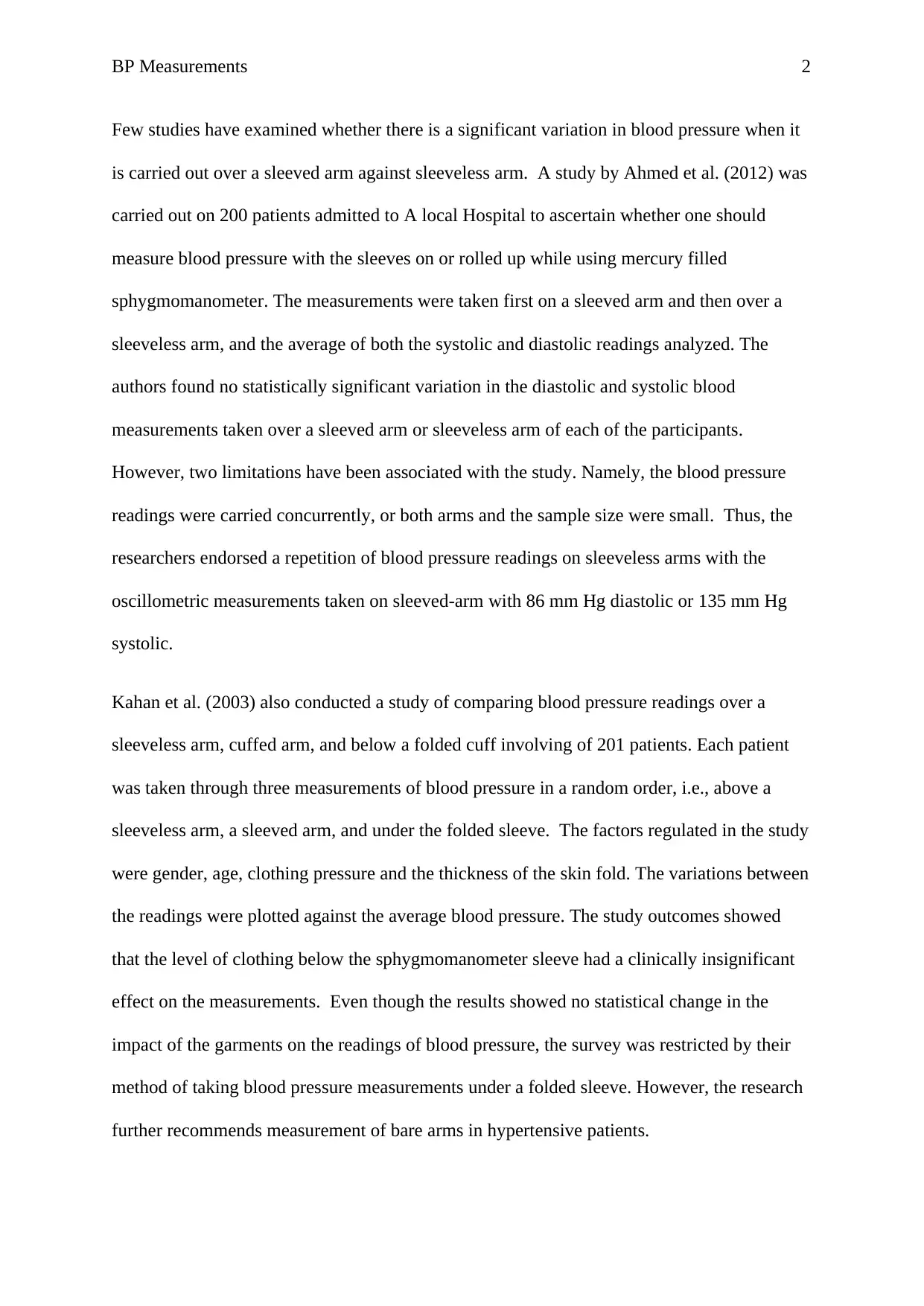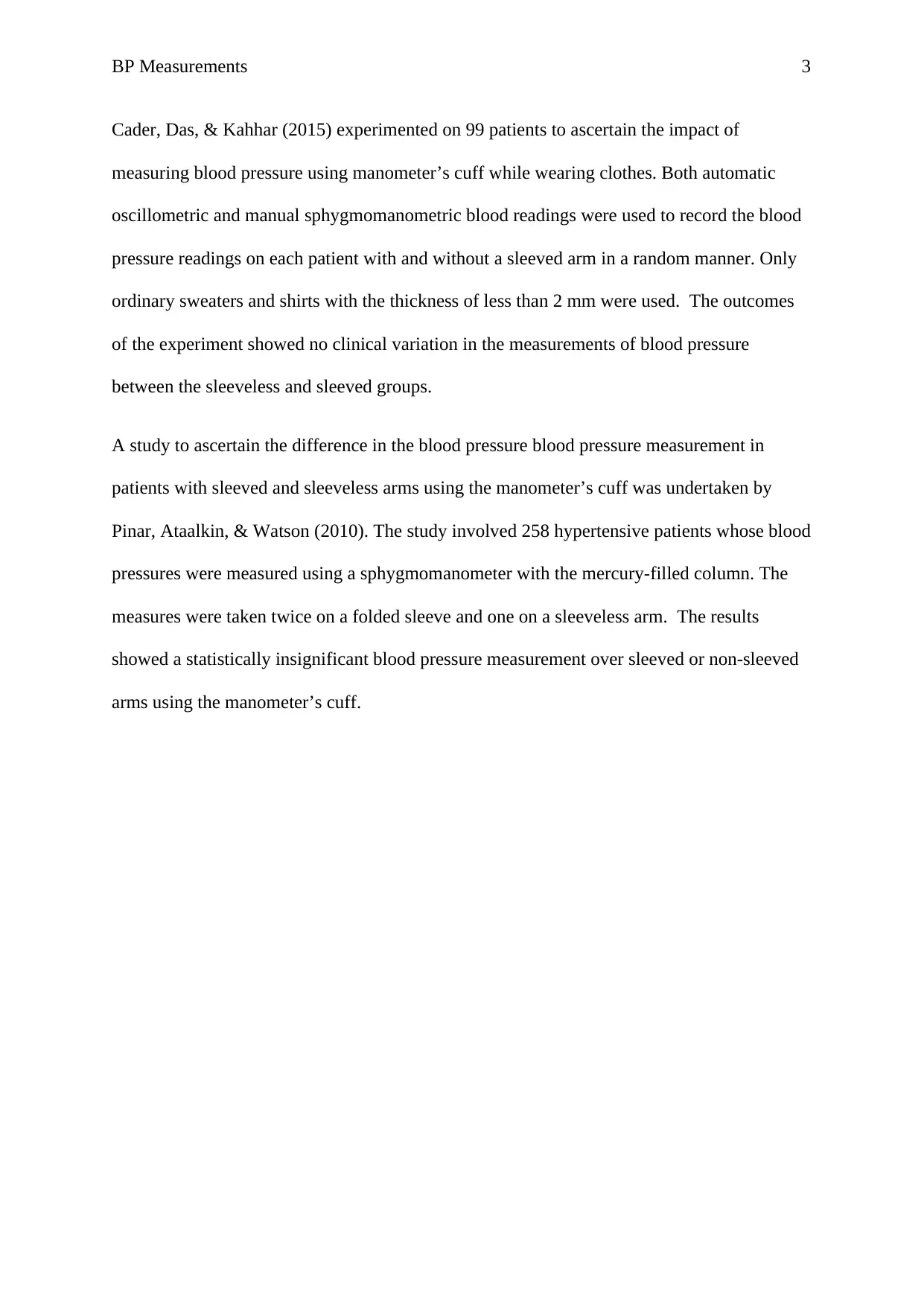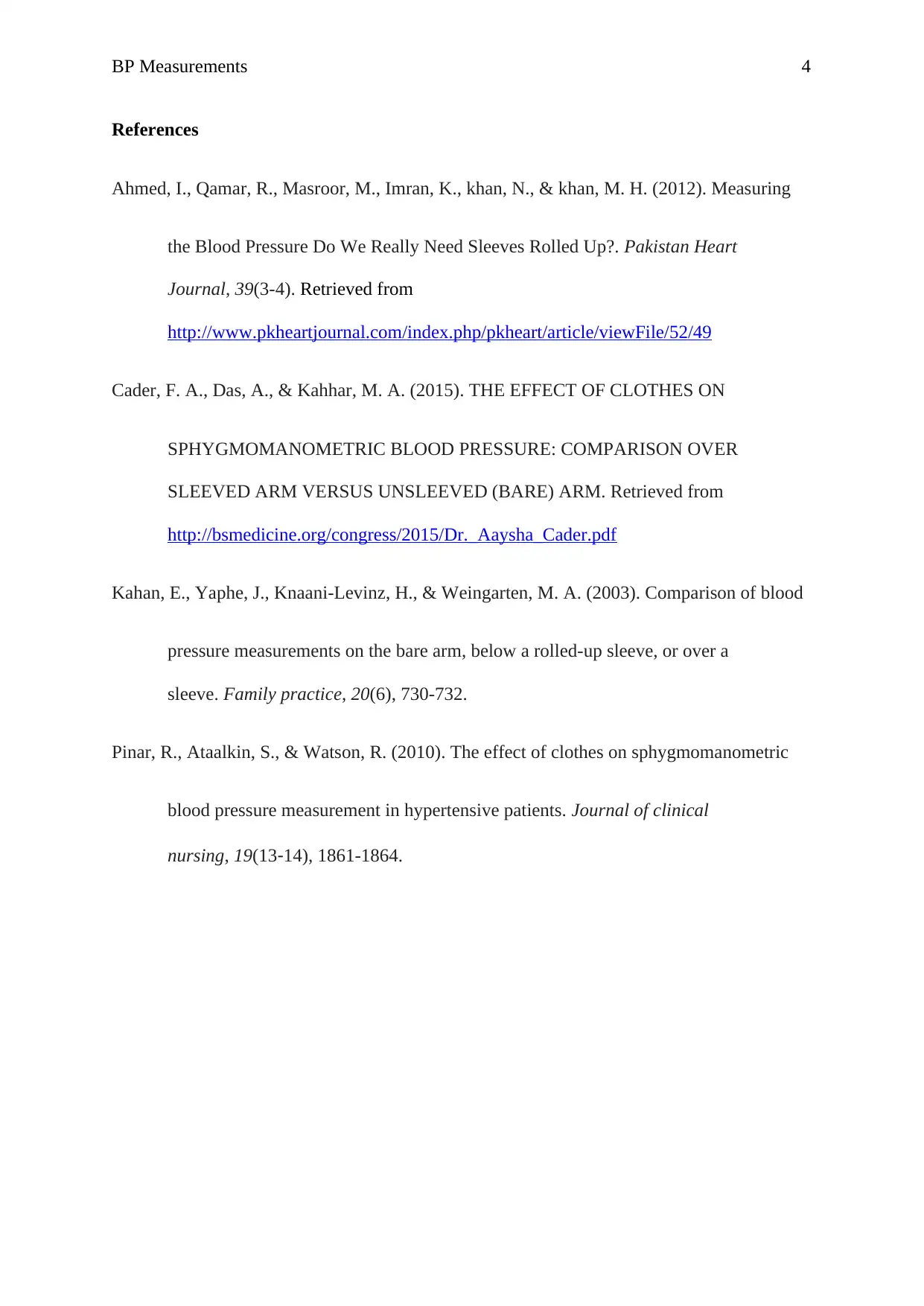Literature Review: The Impact of Sleeves on Blood Pressure Readings
VerifiedAdded on 2020/05/28
|4
|770
|143
Report
AI Summary
This report provides a literature review of studies examining the impact of clothing, specifically sleeves, on the accuracy of blood pressure measurements. Several studies, including those by Ahmed et al. (2012), Kahan et al. (2003), Cader, Das, & Kahhar (2015), and Pinar, Ataalkin, & Watson (2010), are analyzed to determine if there is a statistically significant difference in blood pressure readings taken over a sleeved arm versus a sleeveless arm. The studies employed various methods, including the use of mercury sphygmomanometers and oscillometric devices. While some studies found no significant variation, limitations such as small sample sizes and measurement techniques are discussed. The report synthesizes the findings to provide a comprehensive overview of the current research and recommendations for best practices in blood pressure measurement, particularly in hypertensive patients. The report emphasizes the importance of considering clothing when taking blood pressure readings to ensure accurate results.
1 out of 4








![[object Object]](/_next/static/media/star-bottom.7253800d.svg)